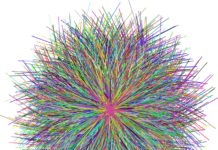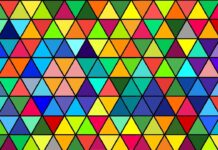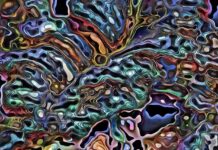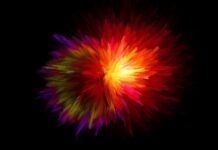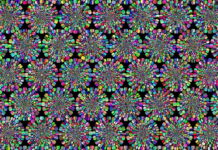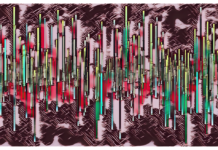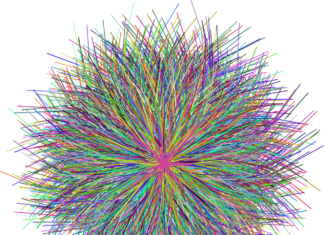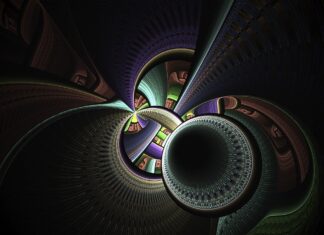Hanfu, Hanfu, Hanfu. This traditional Chinese attire carries a rich cultural heritage that spans thousands of years. It represents the traditional clothing worn by the Han ethnic group in China and embodies the essence of Chinese aesthetics, history, and philosophy. Hanfu, with its elegant and distinctive styles, has experienced a resurgence in popularity in recent years, both in China and abroad. To delve into the world of Hanfu, let’s explore ten important things you need to know.
1. Historical Origins: Hanfu originated during the Han Dynasty (206 BCE-220 CE) and continued to evolve throughout various dynasties, including the Tang (618-907 CE), Song (960-1279 CE), and Ming (1368-1644 CE) dynasties. The style and designs of Hanfu changed over time but retained a sense of cultural continuity.
2. Symbolism and Aesthetics: Hanfu embodies the principles of Confucianism, emphasizing harmony between heaven, earth, and humanity. It embodies the ideal of balanced beauty, characterized by flowing lines, loose and comfortable fits, and a focus on natural materials. Hanfu’s aesthetic appeal lies in its understated elegance and graceful simplicity.
3. Traditional Hanfu Categories: Hanfu consists of several categories, including the Ru-style (scholar’s robes), Qixiong Ru (cross-collar robes), Aoqun (jacket and skirt), and Beizi (a type of outer garment). Each category has its distinctive features and is worn on different occasions or by different social classes.
4. Layered Dressing Style: Hanfu features layered dressing, with garments worn one on top of the other. This layering creates a sense of depth and richness, allowing for creative combinations of colors, patterns, and textures.
5. Accessories and Hairstyles: Hanfu is often accompanied by various accessories, such as headdresses, hairpins, belts, and jewelry, which enhance the overall aesthetic. Hairstyles, including intricate braids and elegant updos, complement the attire and complete the traditional look.
6. Regional Variations: China’s vast geographic and cultural diversity has led to regional variations in Hanfu. Each region has its unique styles, influenced by local customs, climate, and historical factors. Examples include the Shanxi Ru-style, the Shenyi-style from Shandong, and the Zhongshan Zhuang-style from Guangdong.
7. Cultural Revival: Hanfu experienced a decline in popularity during the Qing Dynasty (1644-1912 CE) due to political and cultural changes. However, in recent years, there has been a resurgence of interest in Hanfu, fueled by a growing appreciation for traditional culture and a desire to reclaim cultural identity.
8. Modern Adaptations: While traditional Hanfu remains the epitome of elegance, modern adaptations have emerged to cater to contemporary tastes. These adaptations incorporate elements of Hanfu into everyday fashion, blending traditional and modern aesthetics.
9. Social and Cultural Significance: Hanfu is more than just clothing; it carries deep social and cultural significance. Wearing Hanfu can foster a sense of pride in Chinese heritage, promote cultural exchange, and serve as a means of self-expression and identity.
10. Events and Communities: Hanfu enthusiasts gather at various events, such as Hanfu festivals and conventions, to celebrate and showcase their love for Hanfu. Online communities and social media platforms also play a crucial role in connecting Hanfu enthusiasts worldwide, fostering a sense of community and sharing knowledge.
Hanfu represents a remarkable blend of history, aesthetics, and cultural heritage. Its revival in recent years has sparked a renewed interest in traditional Chinese attire, both within China and across the globe. Whether one appreciates its historical significance, its aesthetic beauty, or its role in cultural exchange, Hanfu serves as a captivating window into the rich tapestry of Chinese culture.
The resurgence of Hanfu has not only revived interest in traditional attire but also sparked a broader exploration of Chinese history, philosophy, and art. Through the study and appreciation of Hanfu, enthusiasts gain a deeper understanding of the values, customs, and aesthetics that have shaped Chinese civilization.
Hanfu, Hanfu, Hanfu. This traditional Chinese attire has a rich history that spans thousands of years and holds significant cultural and aesthetic value. Hanfu, which translates to “Han clothing” in English, refers to the traditional dress of the Han Chinese people, the largest ethnic group in China. It embodies the essence of Chinese civilization, representing a distinct form of clothing that has evolved and transformed over centuries.
The origins of Hanfu can be traced back to ancient times, specifically the Han Dynasty (206 BCE-220 CE). During this period, the Han Chinese developed a unique style of clothing that became the foundation for Hanfu. Hanfu, characterized by its loose and flowing silhouettes, typically consists of several layers of garments worn together. These garments include robes, jackets, tunics, and skirts, all designed to accentuate the natural beauty of the wearer and promote a sense of grace and elegance.
Hanfu reflects the philosophical and cultural beliefs of the Han Chinese. The emphasis on modesty, harmony with nature, and the pursuit of balance is deeply ingrained in the design and aesthetics of Hanfu. The garments are often made from natural materials such as silk, linen, and cotton, reflecting the importance placed on organic and sustainable resources. The color palette of Hanfu is diverse, with rich hues such as crimson, emerald green, sapphire blue, and golden yellow, each representing different virtues and symbolisms.
Throughout history, Hanfu has gone through various transformations in response to political, social, and cultural changes. Each dynasty brought its own unique styles and influences to Hanfu, resulting in a rich tapestry of designs and variations. During the Tang Dynasty (618-907 CE), Hanfu reached its pinnacle, with elaborate and ornate designs that showcased the wealth and opulence of the empire. The Song Dynasty (960-1279 CE) marked a shift towards simpler and more understated Hanfu styles, reflecting the neo-Confucian ideals of the time.
Hanfu is not merely a form of clothing but a cultural phenomenon that encompasses a holistic lifestyle. The act of wearing Hanfu is seen as a way to pay homage to the traditions and values of Chinese culture. It is often associated with ceremonies, festivals, and important occasions, where individuals don Hanfu to showcase their respect for heritage and identity. Furthermore, Hanfu enthusiasts and communities have emerged worldwide, fostering a sense of pride and connection to Chinese history and traditions.
In recent years, there has been a resurgence of interest in Hanfu, both within China and internationally. This revival can be attributed to a combination of factors, including increased cultural awareness, a desire to reconnect with traditional roots, and the influence of popular culture. Hanfu has gained popularity among young people, who view it as a form of self-expression and a way to distinguish themselves from Western fashion trends. Social media platforms have played a crucial role in promoting and spreading the beauty and significance of Hanfu, with numerous online communities dedicated to sharing styling tips, historical knowledge, and personal experiences.
Despite its growing popularity, the preservation and promotion of Hanfu face certain challenges. The standardization of Hanfu styles and the accurate reproduction of historical garments can be complex tasks. Additionally, the appropriation and misrepresentation of Hanfu in popular culture and fashion industry can dilute its authenticity and cultural significance. However, efforts are being made by organizations, designers, and enthusiasts to educate and raise awareness about Hanfu, ensuring its cultural integrity is respected and preserved.
Hanfu is not just a set of garments; it is a symbol of Chinese culture, history, and identity. Hanfu, with its timeless elegance and deep-rooted traditions, continues to captivate people around the world. By embracing and appreciating Hanfu, individuals can not only celebrate the rich heritage and legacy of the Han Chinese but also foster cross-cultural understanding and appreciation.
One of the key aspects that make Hanfu so captivating is its exquisite craftsmanship and attention to detail. The process of creating Hanfu involves skilled artisans who employ traditional techniques passed down through generations. From the selection of high-quality fabrics to intricate embroidery and delicate hand-sewn decorations, every step in the production of Hanfu is a testament to the artistry and dedication of the craftsmen.
The beauty of Hanfu lies not only in its external appearance but also in the symbolism and cultural significance embedded within each garment. Various elements, such as the style of the collar, the cut of the sleeves, and the patterns used, hold specific meanings. For example, the “Ruqun” style, characterized by a top and skirt combination, represents traditional Confucian virtues of modesty, while the “Daopao” robe is associated with scholarly pursuits and intellectual refinement.
Hanfu is not limited to a specific gender; both men and women can enjoy wearing it. For men, Hanfu typically consists of robes, long tunics, and wide-leg pants. The designs emphasize masculinity while maintaining an elegant and dignified aesthetic. Women’s Hanfu, on the other hand, showcases a graceful and feminine appeal with flowing dresses, layered skirts, and intricate accessories such as hairpins and silk ribbons.
To complement the attire, various accessories are essential to complete the Hanfu ensemble. These include elaborate headdresses, such as the “Phoenix crown” and the “Ji Zi Gua,” which add regal elegance to the overall look. Sashes, belts, and traditional footwear, such as the “lotus shoes” for women and “cloth boots” for men, contribute to the authenticity and charm of Hanfu.
While Hanfu is deeply rooted in tradition, it has also evolved to cater to contemporary sensibilities. Modern Hanfu designs often incorporate elements of fusion fashion, blending traditional aesthetics with modern silhouettes and patterns. This fusion not only appeals to younger generations but also enables Hanfu to be more versatile and adaptable to different occasions and personal preferences.
The popularity of Hanfu has led to the establishment of Hanfu festivals, exhibitions, and even dedicated Hanfu-themed parks and cultural centers. These platforms provide opportunities for individuals to immerse themselves in the beauty and splendor of Hanfu, participate in cultural activities, and gain a deeper understanding of its historical significance. Furthermore, Hanfu enthusiasts organize gatherings and social events where they can showcase their meticulously crafted outfits and engage in discussions about Hanfu history, culture, and fashion.
The resurgence of Hanfu has also contributed to the revitalization of related traditional arts and crafts. The demand for high-quality fabrics, embroidery, and accessories has created economic opportunities for local artisans and small businesses specializing in traditional craftsmanship. This revival has not only preserved traditional skills but also ensured their continuity and relevance in the modern era.
In conclusion, Hanfu represents a magnificent tapestry of Chinese cultural heritage, woven through the threads of history, craftsmanship, and symbolism. Its enduring appeal lies in its ability to transcend time and borders, captivating individuals who seek to embrace their roots, appreciate cultural diversity, and celebrate the beauty of traditional attire. Hanfu’s resurgence serves as a testament to the power of cultural preservation and the enduring legacy of ancient traditions. By embracing Hanfu, we can embark on a journey that connects us to the splendor of China’s past while embracing the beauty of its present and future.



